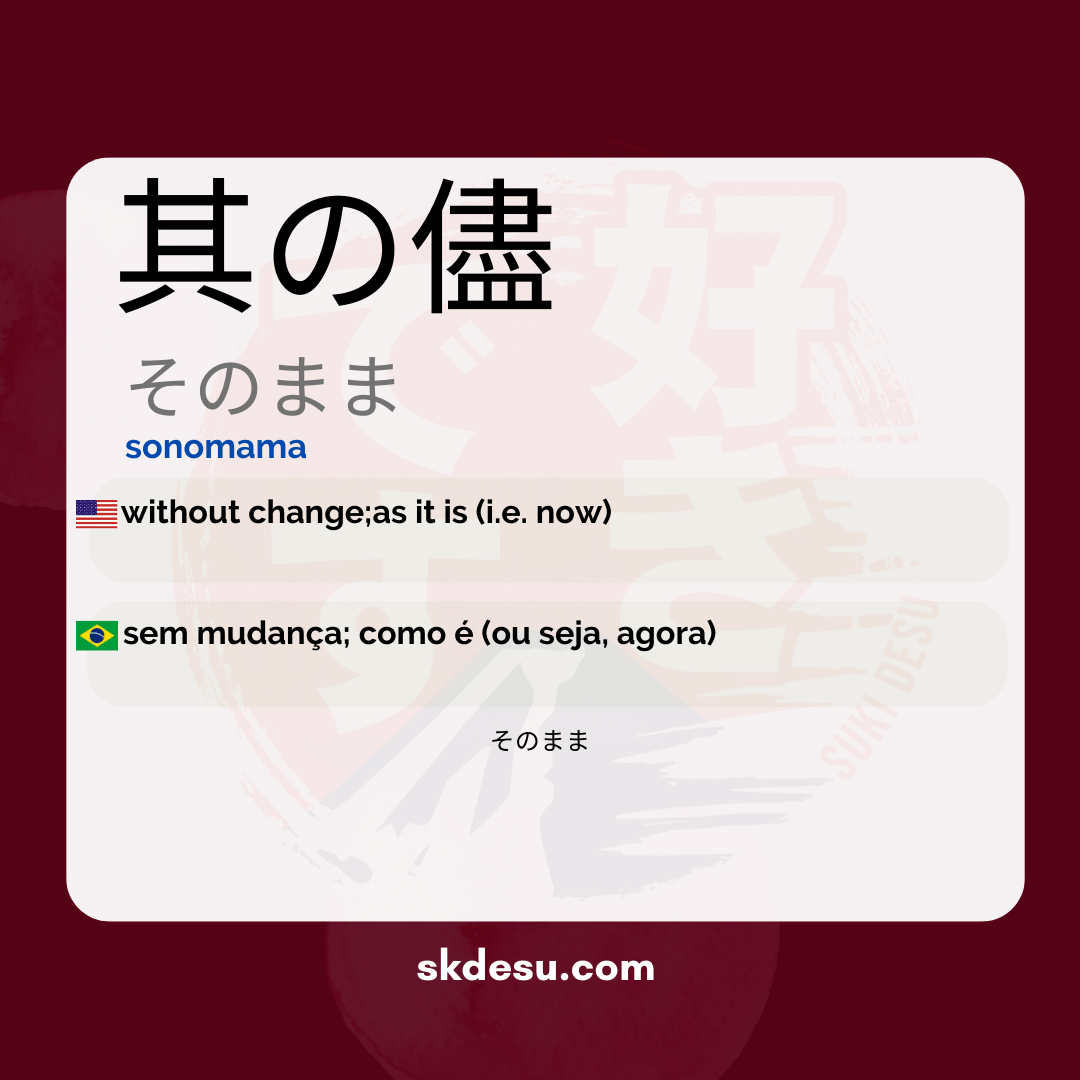Translation and Meaning of: 其の儘 - sonomama
The Japanese word 其の儘 [そのまま] is a fascinating term that carries subtle nuances and deep meanings. If you are studying Japanese or simply interested in Japanese culture, understanding how this expression is used in everyday life can enrich your vocabulary and comprehension of the language. In this article, we will explore its meaning, origin, and practical applications, as well as tips for memorizing it correctly.
Frequently found in everyday conversations, 其の儘[そのまま] reflects important aspects of Japanese communication, such as simplicity and naturalness. Whether in animes, music, or social interactions, this word appears in contexts that value authenticity. Here at Suki Nihongo, our Japanese dictionary, you can find detailed explanations to master terms like this efficiently.
Meaning and use of 其の儘[そのまま]
In its most direct translation, 其の儘[そのまま] means "as it is" or "without changes." It is often used to indicate that something should remain in its original state, without alterations or interference. For example, if someone asks if they should modify an object, the response can be "そのままでいい" (it's fine as it is).
In addition to its literal meaning, the word also carries a connotation of acceptance. In Japan, where harmony and respect for the natural state of things are important values, 其の儘[そのまま] can convey the idea of letting things flow without forcing changes. This concept connects with philosophies such as "wabi-sabi," which celebrates imperfection and transience.
Origin and writing of kanjis
The composition of 其の儘[そのまま] is interesting because it combines uncommon kanjis in modern Japanese. The first character, 其 (pronounced "so"), is an archaic demonstrative pronoun meaning "that" or "this". Meanwhile, 儘 (pronounced "mama") has the sense of "as it is" or "at ease", being a kanji that appears in few words today.
Although the kanji writing exists, it is more common to see this expression written in hiragana (そのまま) in daily life. This happens because the original kanji are considered complex and have fallen out of use over time. Even so, knowing its origin helps to better understand the meaning behind the word.
Tips for memorizing and using correctly
An effective way to remember そのまま is to associate it with everyday situations. Imagine someone serving a dish and saying "Please eat it as it is." This type of context helps to internalize the term naturally. Another tip is to listen to music or watch animes where the word appears, such as in dialogues that emphasize the idea of acceptance.
It's worth noting that, although 其の儘[そのまま] can be translated as "as it is," it should not be confused with expressions like その通り (exactly like that) or そのままにしておく (leave it as it is). Each has a specific usage, and understanding these differences helps avoid communication errors. Practicing with real examples is the best way to master this vocabulary.
Vocabulary
Expand your vocabulary with related words:
Synonyms and similar words
- そのまま (sonomama) - how are you; without changes
Related words
Romaji: sonomama
Kana: そのまま
Type: noun
L: jlpt-n3, jlpt-n1
Translation / Meaning: no change; how it is (or rather, now)
Meaning in English: without change;as it is (i.e. now)
Definition: Just like this.
Quick Access
- Vocabulary
- Writing
- Sentences
How to Write in Japanese - (其の儘) sonomama
See below a step-by-step guide on how to write the word by hand in Japanese. (其の儘) sonomama:
Example Sentences - (其の儘) sonomama
See below some example sentences:
Nenhum resultado encontrado.
Other Words of this Type: noun
See other words from our dictionary that are also: noun

